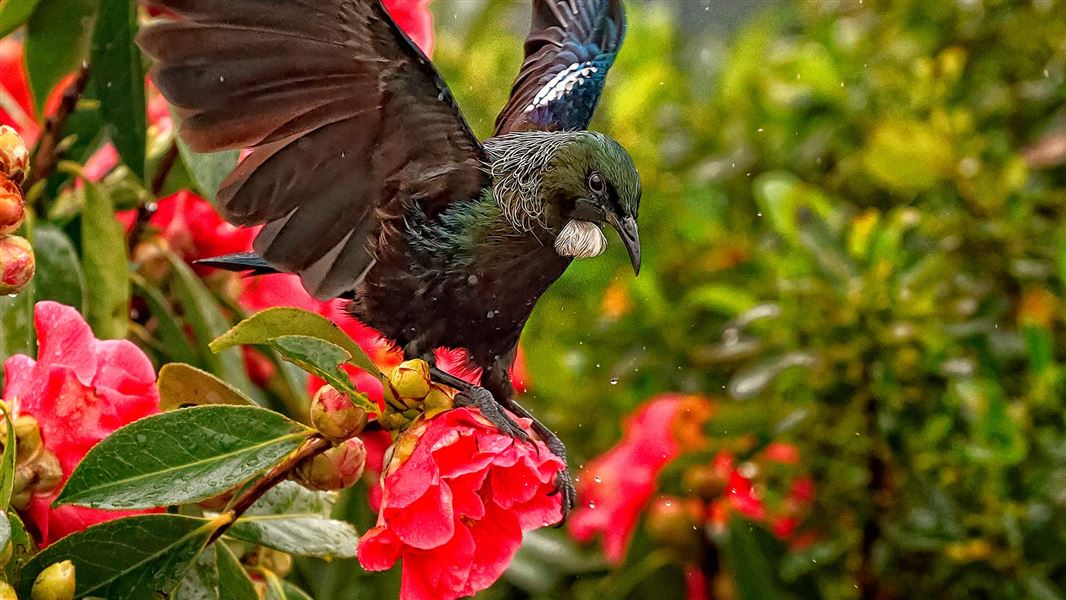New Zealand status: Endemic
Conservation status: Not Threatened
Population: Can be locally abundant where there is good pest control and flowering/fruiting habitat.
Found in: North, South and Stewart Islands, and their offshore islands
Threats: Predation, habitat loss
Sound recordings:
Tūī communication calls (MP3, 2,228K)
02:22 – Communication calls.
Tūī territorial calls (MP3, 3,001K)
03:11 – Male territorial calls.
Species information: Tui on NZ Birds Online
Image gallery
Did you know?
The clever tūī can mimic sounds such as the calls of the bellbird or ringtones of phones.
Tūī conservation
Tūī can be found throughout the three main islands of New Zealand. They are scarce only in drier, largely open, country east of the Southern Alps. They live in native forests, bush reserves, and bush remnants.
The Chatham Islands tui is a threatened subspecies of tūī.
These attractive birds can often be heard singing their beautiful melodies interspersed with grunts and chortles before they are spotted. You will recognise them by their distinctive white tuft under their throat and noisy wingbeats.
They are important pollinators of many native trees and will fly large distances, especially during winter for their favourite foods. They feed mainly on nectar from flowers of native plants such as kōwhai, puriri, rewarewa, kahikatea, pohutukawa, rātā and flax. Occasionally they will eat insects too.
Predator control
Protective of their living space, tūī have been known to defend themselves against magpies and even 'mob' harriers and falcons. The tūī has suffered in the past with the introduction of predators such as possums, feral cats, rats, stoats, and the destruction of habitat.
A good sign of a successful restoration programme in areas of New Zealand, is the sound of the tūī singing in surrounding shrubs.
Effective predator control in various regions around New Zealand has resulted in a dramatic increase in tūī numbers. For example, it's reported that in Wellington there has been an eight-fold increase in tūī numbers since the council began pest control in parks and reserves across the wider city region.
You can help
Plant a variety of natives to provide a year-round food supply for tūī. Plants need to be carefully selected so there are flowers and fruit at different times.
Tūī can be attracted to feed at troughs full of sugar-water.
